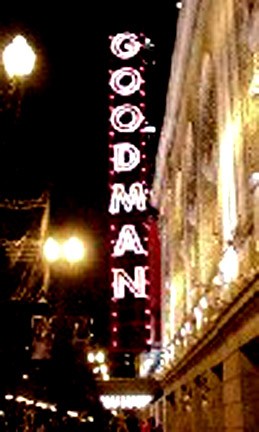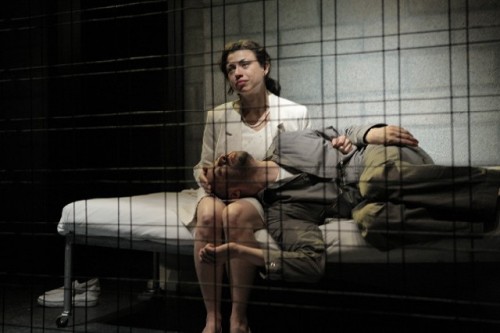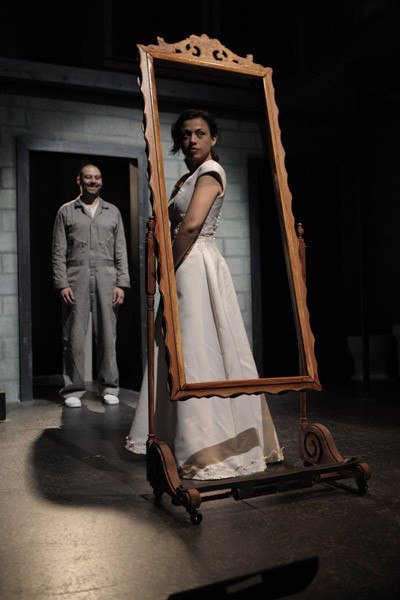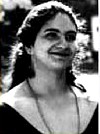El Grito del Bronx at the Goodman Theater, Chicago
World Premier By Migdalia Cruz
By: Susan Hall - Aug 04, 2009
El Grito del Bronx
By Migdalia Cruz
Directed by Anthony Moseley
Set Designer Regina Garcia
Llghting Director Jeremy Getz
Goodman Theatre
170 North Dearborn Street
Chicago, IL 60601
Through August 9
The world premiere of Migdalia Cruz's new play El Grito del Bronx at the Goodman Theater in Chicago comes with an offer you can't refuse: the Driehaus Foundation's money-back guarantee. Audience members can request a refund if they aren't satisfied with the production. I contacted the producer's office to see how many requests there'd been: only eight. I was surprised even eight people felt they didn't get their money's worth. El Grito is a superior show.
In this country, the Goodman is on the cutting edge of theatrical presentation -- deploying many concepts that make contemporary European theater so successful. The set of El Grito is operatic, the present tense on stage level and the past one level above. Stylish staging with lean lines, but by-no-means minimalist, provides the appropriate backdrop for performances delivered with spot on emotional acuity. We are surrounded by the sounds of place. A bride-to-be, Lulu, dressed in white, tells us at the outset that white is wrong: "Everything about me is red now."
In the summer, the Goodman traditionally produces plays in collaboration with local Latino companies - Collaboraction and Teatro Vista this year. Certainly El Grito is a Latino play we Anglos can appreciate – as familiar as we've become with the magical realism of Gabriel Garcia Marques and Isabel Allende et al. Playwright Cruz is astride two cultures. She hammers out a bond between the often other-worldly sensibility of Latinos and the harsh reality of beginning a new American life.
El Grito is a brutal play forged from the experience of a family recently immigrated from Puerto Rico, a family whose poverty and frustration lead to hot-blooded murders -- nineteen in all – and the incarceration of Papo, a too sensitive soul driven around the bend by an abusive father.
Lulu is Papo's sister, a survivor of her father's murder and her own rape. Here she wonders one last time before her marriage about the meaning of her past: how much is she like her brother now dying of AIDs on death row? Will she be able spring from her own imprisoning history? She is preparing to marry a Jewish journalist who, she announces, is not white, because Jews "care too much, cry too easily, brave issues without their mothers."
The language of the play veers from magic realism, to pure poetry, to humorously apt insights and a shockingly bloody, crude cry of pain – el grito – rising up from mean streets. "Only wings can make a man, because dreams must fly," "You make me laugh in my stomach," "A one-eyed bear reminds you that one makes something more important," and the mother of a son now dead, "How does it feel to have your son turned into a French fry?" Memorable lines do not fully convey the impact of the language as the playwright aptly mixes eloquent beauty with cruel, crude phrases from debased people seared by fear and anger.
Images of desperation color the characters. The thirst of Papo is expressed as the need to suck the souls out of others in order to find his own. Serial acts of violence are an almost comprehensible reaction to a father's slaughter. Papo draws his own blood so that he can paint on his cell walls. Tenderness is found in odd places in prison and is often distant from the crime scenes that came before.
As self-involved as Lulu may be, she never bores, but instead makes us wonder at her capacity to survive at all – her father killed, her mother dead after years of visiting Papo in prison. This mother could never admit Papo wandered out there killing so many other mother's sons.
All these separate threads sound scattered in the telling, but director Anthony Moseley has woven them tight together as he presents this story – often referred to as the 'one story' there is to tell. The steel frames house prisoners literal and otherwise; the use of darkness, of red lights and the sky – sometimes moonlit and at others sun/cloud filled, draw us into an intense world of horror and redemption. Past and present are played out at two different levels, and palms open, hands and bodies dance to embracing rhythms as the language sucks us in.
To single out one actor seems unfair in such a talented ensemble production, but for the actor Juan Villa (as Papo the serial killer) to engage our compassion was a remarkable star turn. The successful mounting of a play with this much blood, gore, and riveting drama made me yearn to see George S. Kaufman's Animal Crackers and Philip Seymour Hoffman's directorial debut among many tempting productions scheduled for the 2009-2010 season.
The Goodman, an unusually intimate theatrical experience, could be a destination in and of itself, but Chicago is of course bristling with artistic activity and well worth a trip – including that brief gaga gaze at our current President's home.
In this country, the Goodman is on the cutting edge of theatrical presentation -- deploying many concepts that make contemporary European theater so successful. The set of El Grito is operatic, the present tense on stage level and the past one level above. Stylish staging with lean lines, but by-no-means minimalist, provides the appropriate backdrop for performances delivered with spot on emotional acuity. We are surrounded by the sounds of place. A bride-to-be, Lulu, dressed in white, tells us at the outset that white is wrong: "Everything about me is red now."
In the summer, the Goodman traditionally produces plays in collaboration with local Latino companies - Collaboraction and Teatro Vista this year. Certainly El Grito is a Latino play we Anglos can appreciate – as familiar as we've become with the magical realism of Gabriel Garcia Marques and Isabel Allende et al. Playwright Cruz is astride two cultures. She hammers out a bond between the often other-worldly sensibility of Latinos and the harsh reality of beginning a new American life.
El Grito is a brutal play forged from the experience of a family recently immigrated from Puerto Rico, a family whose poverty and frustration lead to hot-blooded murders -- nineteen in all – and the incarceration of Papo, a too sensitive soul driven around the bend by an abusive father.
Lulu is Papo's sister, a survivor of her father's murder and her own rape. Here she wonders one last time before her marriage about the meaning of her past: how much is she like her brother now dying of AIDs on death row? Will she be able spring from her own imprisoning history? She is preparing to marry a Jewish journalist who, she announces, is not white, because Jews "care too much, cry too easily, brave issues without their mothers."
The language of the play veers from magic realism, to pure poetry, to humorously apt insights and a shockingly bloody, crude cry of pain – el grito – rising up from mean streets. "Only wings can make a man, because dreams must fly," "You make me laugh in my stomach," "A one-eyed bear reminds you that one makes something more important," and the mother of a son now dead, "How does it feel to have your son turned into a French fry?" Memorable lines do not fully convey the impact of the language as the playwright aptly mixes eloquent beauty with cruel, crude phrases from debased people seared by fear and anger.
Images of desperation color the characters. The thirst of Papo is expressed as the need to suck the souls out of others in order to find his own. Serial acts of violence are an almost comprehensible reaction to a father's slaughter. Papo draws his own blood so that he can paint on his cell walls. Tenderness is found in odd places in prison and is often distant from the crime scenes that came before.
As self-involved as Lulu may be, she never bores, but instead makes us wonder at her capacity to survive at all – her father killed, her mother dead after years of visiting Papo in prison. This mother could never admit Papo wandered out there killing so many other mother's sons.
All these separate threads sound scattered in the telling, but director Anthony Moseley has woven them tight together as he presents this story – often referred to as the 'one story' there is to tell. The steel frames house prisoners literal and otherwise; the use of darkness, of red lights and the sky – sometimes moonlit and at others sun/cloud filled, draw us into an intense world of horror and redemption. Past and present are played out at two different levels, and palms open, hands and bodies dance to embracing rhythms as the language sucks us in.
To single out one actor seems unfair in such a talented ensemble production, but for the actor Juan Villa (as Papo the serial killer) to engage our compassion was a remarkable star turn. The successful mounting of a play with this much blood, gore, and riveting drama made me yearn to see George S. Kaufman's Animal Crackers and Philip Seymour Hoffman's directorial debut among many tempting productions scheduled for the 2009-2010 season.
The Goodman, an unusually intimate theatrical experience, could be a destination in and of itself, but Chicago is of course bristling with artistic activity and well worth a trip – including that brief gaga gaze at our current President's home.




